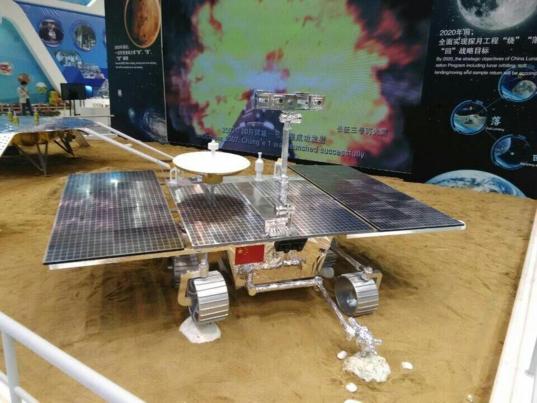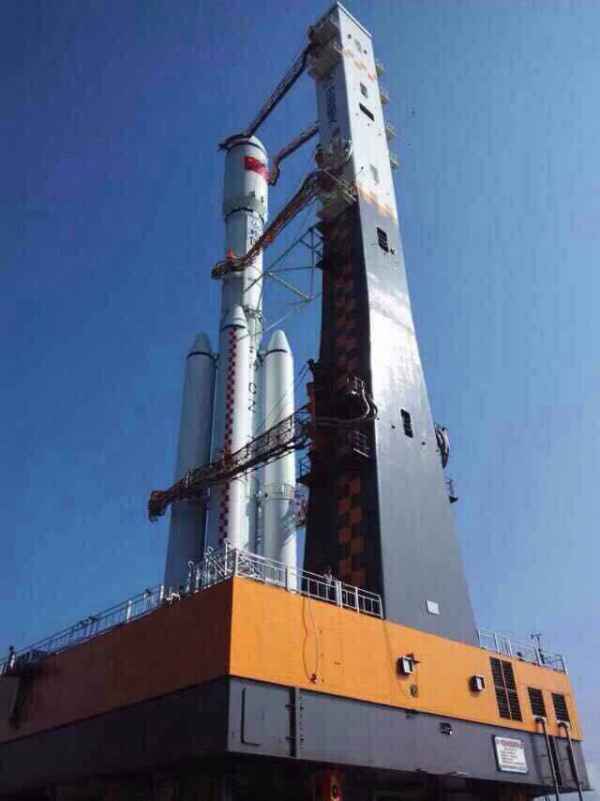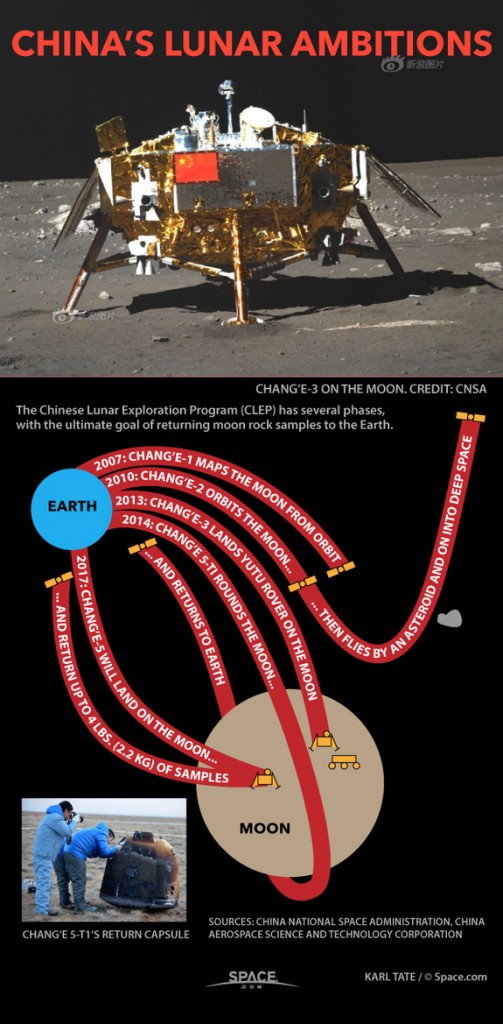March 11, 2015 – Keeping track of China’s space ambitions is interesting. The country has borrowed technology extensively from the Soviet and current Russian programs for its human spaceflights and its development of robotic landers. Recently with Russia at war in Eastern Ukraine, and under economic siege by many Western countries including the United States, the Chinese and Russians have buddied up in terms of space cooperation once again.
But China needs less and less of Russia to continue its burgeoning efforts in space. It is seeking closer cooperation with others including the European Space Agency (ESA). And it is feeling the pressure from India’s home-grown program which has also benefited from past relationships with Russia.
China continues to improve its payload capacity with new more powerful Long March launchers. The LM-7 under development will increase payload launch capacity by 50% over the current LM-2. That will give the Chinese the equivalent launch capacity to the current SpaceX Falcon-9.
A new launch facility has recently opened on Hainan Island at Wenchang. This has made it much easier for China to assemble its rockets and mission payloads which can now come by water rather than overland.
For in space manoeuvring China recently announced the development of a new propulsion system using a Hall effect thruster. The technology can operate for extended periods (up to 18,000 hours) and a forthcoming mission, Dong Fang Hong 4, if deployed with a Hall effect thruster, will see fuel reduced by 80%, from 4.8 tons to 1.9 tons. That means future satellites in near-Earth or geosynchronous orbit will be able to carry more instrumentation and far less fuel. China expects to use this technology as it looks to expand its program to Deep Space missions exploring Mars and the Asteroid Belt. NASA and the ESA have experimented with Hall effect thrusters but have to this date only deployed it on one mission.
So here are some of the announced plans and speculation on future Chinese human and robotic missions.
Human Missions
2016 – China intends to launch its second space lab, Tiangong 2. It will be joined by a human mission on Shenzhou 11 (China’s version of the Russian Soyuz). The Chinese intend to resupply the lab by launching a cargo module, Tianzhou-1, in the same year. These missions will be precursors to a much more ambitious program scheduled for 2018.
2018 to 2022 – China intends to start assembling its own space station with several missions over a five year span beginning in 2018.
2025 – China lands a human crew on the Moon.
2030 – China constructs a lunar base for permanent habitation of the Moon.
Robotic Missions
2017 – China to send Chang’e-5 to the Moon, culminating a ten-year program of lunar exploration. This final robotic mission will bring back 2 kilograms (4.4 pounds) of lunar rocks and soil to Earth for study.
2020 – China to launch a mission to Mars combining an orbiter and rover (see image below).
2021 – China and ESA have announced plans for an unspecified robotic space mission with no destination or mission goal announced. Speculation it may be headed for the Asteroid Belt.
2030 – China to launch Mars sample return mission.

For China to surpass either Russia or the United States in space flight they need to increase launch capacity first and foremost. LM-7 will not get them there in the next few years. But the Chinese are intent on proving they can make technological progress and breakthroughs that will provide short cuts to help them catch up with their space rivals. By mid-century, unless the United States and the commercial American space companies pick up the pace, China may be the leading spacefaring nation here on Earth.






















[…] is quickly changing as many new countries launch their own space programmes. Last year China announced plans for a manned space station, currently scheduled to be launched in 2018 with the aim of being […]
[…] is quickly changing as many new countries launch their own space programmes. Last year China announced plans for a manned space station, currently scheduled to be launched in 2018 with the aim of being […]
[…] is quickly changing as many new countries launch their own space programmes. Last year China announced plans for a manned space station, currently scheduled to be launched in 2018 with the aim of being […]
[…] is quickly changing as many new countries launch their own space programmes. Last year China announced plans for a manned space station, currently scheduled to be launched in 2018 with the aim of being […]
[…] is quickly changing as many new countries launch their own space programmes. Last year China announced plans for a manned space station, currently scheduled to be launched in 2018 with the aim of being […]
[…] transforming as numerous brand-new nations release their very own room programs. Last year China revealed strategiesfor a manned spaceport station, presently arranged to be introduced in 2018 with the objective of […]